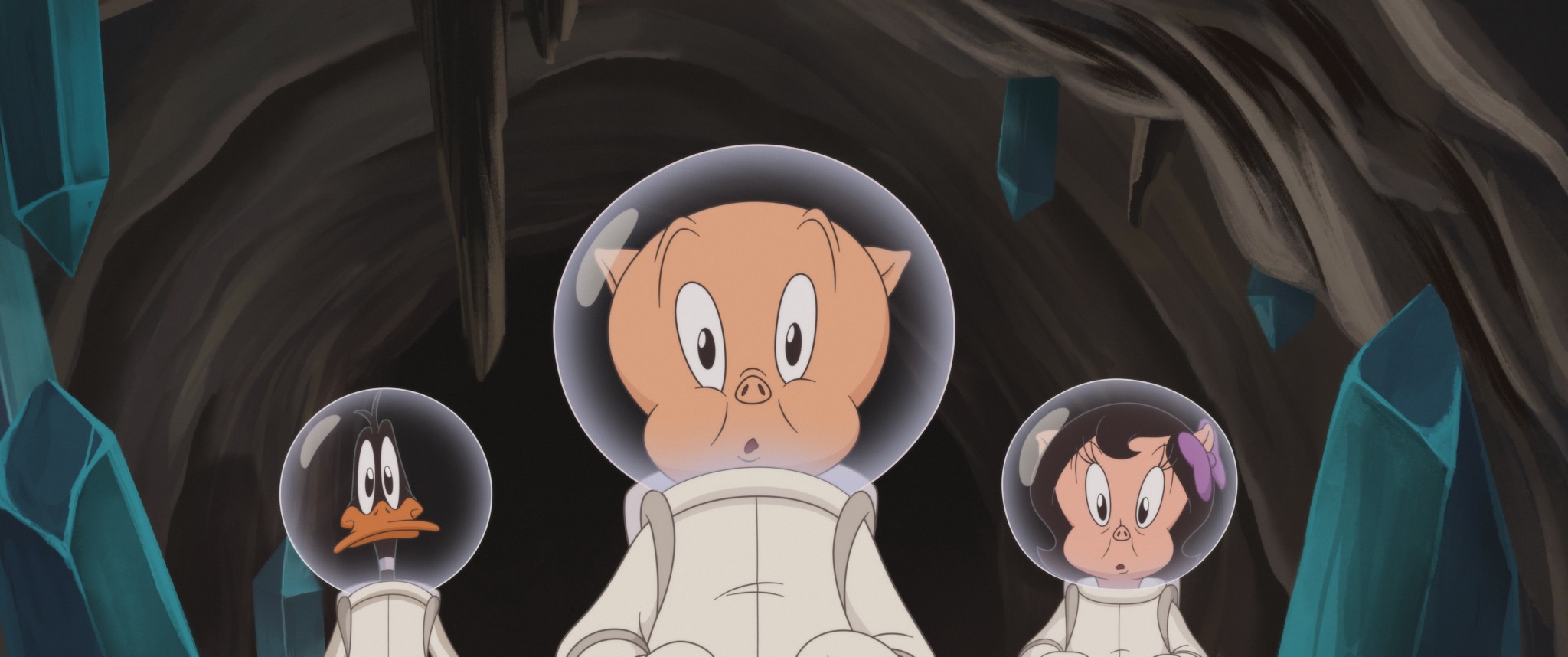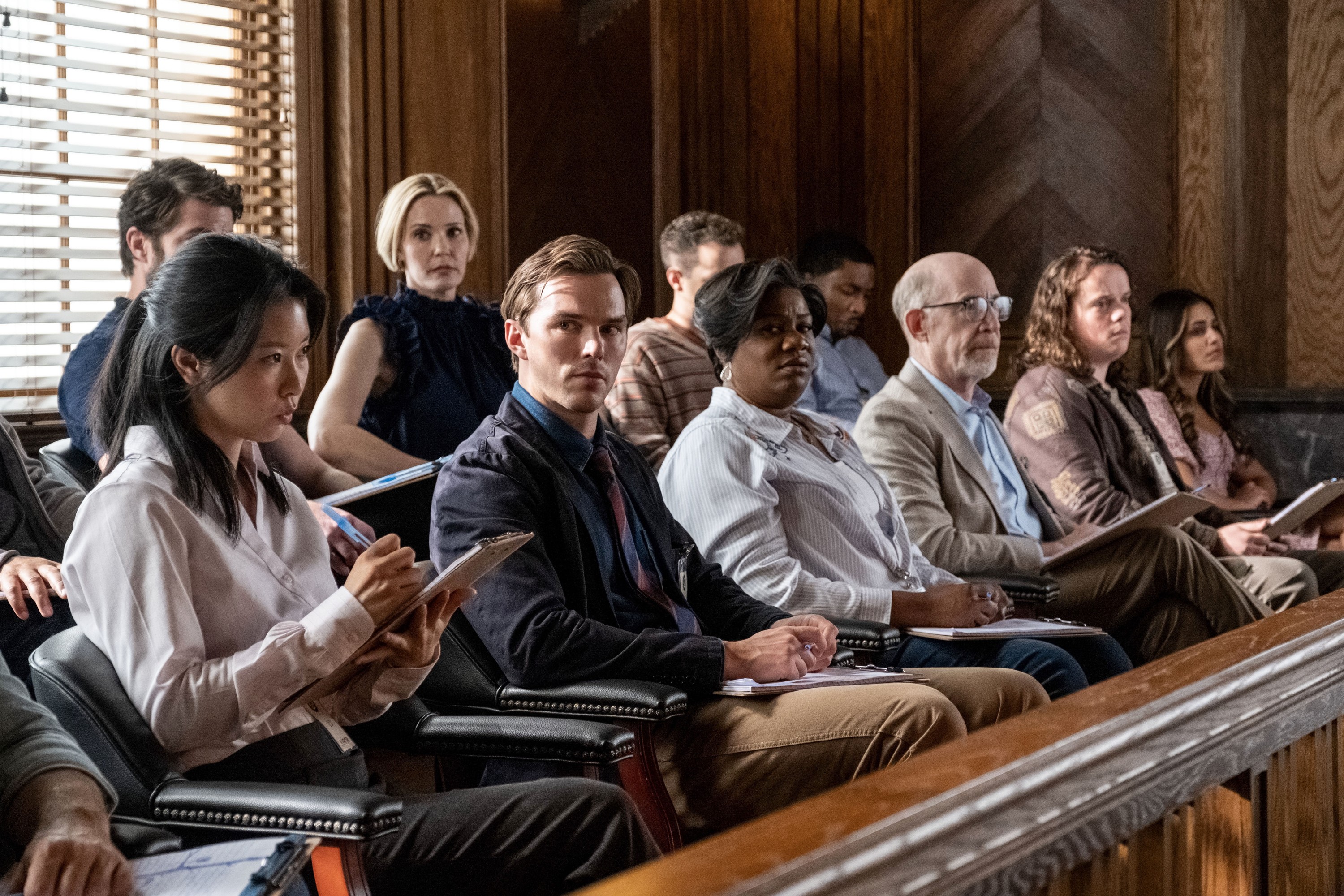By providing your information, you agree to our Terms of Use and our Privacy Policy. We use vendors that may also process your information to help provide our services. This site is protected by reCAPTCHA Enterprise and the Google Privacy Policy and Terms of Service apply.
At Last, ‘Gomorrah’ Is the Prestige Drama That HBO Max Needs

Dana Harris-Bridson

From launch, critics dogged HBO Max about its higher pricing, the lack of access via Roku — and most of all, the apparent dearth of must-see shows that would make the streamer essential instead of one more platform among so many. Last summer, the complaints were still fresh when HBO Max announced a slate of international acquisitions: There, next to “The Great Pottery Throw Down,” was “Gomorrah.” All four seasons, companion movie “The Immortal,” and a fifth season to come. An Italian mafia drama didn’t get much attention; it wasn’t the stuff of corporate strategy.
But “Gomorrah” is much more than a quirky streamer pickup. For its Italian producer, Cattleya, “Gomorrah” sparked a trend in gritty, real-world storytelling that reshaped Italian TV. Beta Film — a company founded to exploit Federico Fellini’s “La Strada” — licensed “Gomorrah” in nearly 200 countries, and it became one of the most successful properties in its history. In Italy, the audience for the Season 4 premiere surpassed that of “Game of Thrones.”
For HBO Max, “Gomorrah” may be the prestige series it’s been waiting for. It doesn’t have to be “Game of Thrones” to be a success, but it could help define HBO Max much as “The Sopranos” did for HBO more than two decades ago. It may also save America from being the country that didn’t understand what the rest of the world has known for years: “Gomorrah” is extraordinary.
“Gomorrah” is based on Roberto Saviano’s “Gomorrah: A Personal Journey into the Violent International Empire of Naples’ Organized Crime System.” A deeply reported expose of the Camorra crime syndicate that ruled the neighborhoods where Saviano grew up, it was an instant bestseller. The Camorra did not appreciate the exposure: Since the book’s publication in 2006, the author has been forced to live under police protection, with frequent changes of address.
“The book was a phenomenon here,” said “Gomorrah” executive producer and Cattleya partner Gina Gardini, calling from Rome. “It had sort of entered the Italian lexicon [and] just sort of blew the lid off of some things that 99.9 percent of Italians didn’t know.”

The Camorra are nothing like the representations we’ve seen of Sicilian Mafia — “The Sopranos” with their empathetic home lives, or the urbane gangsters of “The Godfather.” Their businesses are much the same — extortion, drug trafficking, money laundering, construction, politics — but the Camorra families form an organization that verges on anarchy.
“They’re not a ‘them,’” Gardini said. “The dynamic of the Camorra is a series of clans that are in constant, constant evolution. Neapolitan organized crime is diametrically opposite the Sicilian mafia. It’s not based on family, it’s not based on blood, it’s not based on loyalty, it’s not based on blood oath. It’s based on shifting alliances and convenience.”
That volatility creates amoral and ruthless violence; Gardini and Cattleya also believed the dramas inherent to that dynamic and insecure infrastructure could make for brilliant TV. Showing the Camorra’s stories — shot on their turf, with no obligation to tidy resolutions — was an opportunity to make something unrelentingly addictive.
Others were doubtful. For one thing, the book had already been adapted into a feature that won the jury’s Grande Prix at the 2008 Cannes Film Festival. “When it was announced that we were going to adapt the book into a series, there was a lot of skepticism,” Gardini said. “Like, ‘What else can you expand on?’ We knew it was incredibly risky.”
The bigger issue: “Gomorrah” was comprised entirely of pitch-black antiheroes. The series is largely set in Le Vele, an infamous housing project on the outskirts of Naples that served as the largest drugs and arms market in Western Europe. While Americans had “The Wire” and “Breaking Bad,” there were few parallels in Italian TV.
“Italy was coming out of a 25-year-period of sort of the worst of the worst, of free TV melodramas shot on very cheap budgets,” Gardini said. “And always from the point of view of a priest or a really good cop, or a mom who had lost her husband.”
By contrast, “Gomorrah” lives within a hyperviolent world of its own creation. “Gomorrah” is subtitled in every territory, including its native Italy, because the characters largely speak in a slang-heavy Neapolitan dialect that is all but impenetrable to anyone who doesn’t live there.
“Gomorrah” follows the Camorra clan of Secondigliano, headed by Pietro Savastano (Fortunato Cerlino). After his arrest, Pietro’s son Genny (Salvatore Esposito) evolves from a dopey manchild who desperately wants to be loved by his family into a mohawked clan leader who doesn’t even acknowledge his receding humanity. His best friend is fellow clan member Ciro Di Marzio (Marco D’Amore), an orphan for whom Genny represents his greatest ally and only true friend — until, he isn’t.
Esposito can vouch for that realism. He grew up in Naples, and counted kids from Camorristi families among his friends. “A lot of things of Genny, the way he looks at the world, his attitude, it comes from me,” he said. “It comes from my experience, comes from my way of talk to the world with Genny’s language and with Genny’s eyes.”

Genny was a breakthrough role for Esposito. His performance caught the attention of Noah Hawley, who cast him as Gaetano Fadda in Season 4 of “Fargo,” and Esposito’s English-language debut received rave reviews. However, “Gomorrah” initially hired Esposito not as an actor but as a scene partner for auditions. After seeing hundreds of actors, the producers realized that he not only understood the dialect but also knew the character. Esposito had lot of friends who, he said, “made the wrong choice.”
“People without money find a way to let the family eat,” he said. “Most of the time, the next hand that they found is the hand of the mob, of the criminals.”
He credits a strong family for keeping him off that path, as well as his own single-minded drive to be an actor. “I was like a train,” he said. “Nobody can stop me. All the things that happened to me, or that I see, that I relate to during my childhood, never stops me. I don’t want to know what the ‘black hands’ can give to me, or can give the people around me, because I know what I’m going to do when I grow up.”
Adding to the realism of “Gomorrah” is the production shoots on practical locations — up to 30 in a single episode, in places long considered off-limits due to the Camorra’s very real presence. All of this is backed by dynamic direction, stunning cinematography, haunting music by psychedelic post-rock collective Mokadelic, and intimate performances with none of the tropes that dog so many Mafia portrayals. It’s a Shakespearean drama inside the grim suburbs of concrete housing projects, grounded in garish wallpaper, gilded stucco, and patron saint figurines dipped in glitter.
Oliver Bachert, executive VP for international sales and acquisitions at Beta Film, said there were plenty of reasons to believe “Gomorrah” wouldn’t find its level of success.
“‘Gomorrah’ ticks every box that any TV executive would tell you, ‘This doesn’t work,’” he said. “It’s dark, it’s not shot in [traditional] Italian, it’s quite male, it’s rough. It’s a world that no one really knows that well. It’s also, let’s say, quite epic in the storytelling, so it’s not very flashy. It would theoretically not tick any box, but this is maybe sometimes also the reason why something works.”
For HBO Max, which seeks fresh exclusives to bolster subscriptions, “Gomorrah” would seem to tick another box of nope: It’s not new. Not only did the series launch in 2014, but it’s also been on the air in the U.S. since 2016. SundanceTV premiered seasons 1 and 2 in the U.S. and the two seasons then moved to Netflix, where it ran until last May.
Five years ago, faced with a gaping content maw, licensing a foreign-language series could seem like something of a Hail Mary pass. American audiences didn’t embrace them, no matter how critically acclaimed, but the airtime had to be filled. This week, Netflix announced that the debut of French-language “Lupin” would top 70 million households, beating even “Bridgerton” and “The Queen’s Gambit.” Necessity may have forced streamers to consider subtitled programming, but it also led viewers to realize that when something is great, language is not a barrier.
“There’s a real audience, whereas before it was kind of the third rail of programming, that Americans would not watch things from other countries, nor would they watch something that was not in English,” said Sarah Aubrey, HBO Max’s head of original content. “[For “Gomorrah”], The original motivation behind it was a business calculation. It was a group of us recognizing that this is just a one-of-a-kind piece of creative material.”
The lesson wasn’t lost on HBO Max’s competitors. Amazon commissioned Cattleya to create “ZeroZeroZero,” an eight-episode Italian-English miniseries about the cocaine trade, based on another nonfiction book by Saviano. Netflix also partnered with Cattleya to create the first Italian-language Netflix Original, “Suburra: Blood on Rome,” a gritty story of gangs, politics, and the Vatican based on real-life events.

Although “Gomorrah” came first, in America the show risked falling between the cracks. The debut of Season 3 was caught in the bankruptcy sale of the Weinstein Company, which held U.S. rights. Another challenge: Since territories around the world already licensed the series, it didn’t fit the global-streaming business model. For HBO Max, which is vested in establishing a domestic foothold, that’s not a problem for now.
“The cooperation with Sundance and Netflix predates the whole streaming, binge-watching, we-embrace-foreign-language-drama era,” said Bachert. “We had almost desperate requests by all the people asking where can they see ‘Gomorrah,’ and it was quite a while until we could clarify the situation.”
Aubrey said she was one of the desperate. “The whole reason why we acquired it is because I’m obsessed with the show,” she said. “I’m a ‘Gomorrah’ superfan — talking to people about how to bootleg it, to see it sooner, faster. [When] Jen Kim, my super-intrepid head of international, said we have the opportunity to get it on the platform, I knew it was a no brainer because so many people that I know have deep love for the show.”
The characters in “Gomorrah” may be undesirables, but in Italy its stars are heartthrobs. When the show is in production and Esposito’s hair is shaved into Genny’s trademark mohawk, Esposito has to wear a hat or be mobbed by fans. Italian rappers namecheck the show’s characters, and the three-cross neck tattoo on Enzo ‘Sangue Blu’ (Arturo Muselli), a character who debuts in Season 3, has become an icon on everything from aprons to jackets.
At the same time, “Gomorrah” faced repeated criticism for lionizing a vicious underworld. The mayor of Naples has said when an episode airs, violent crime in his city spikes. However, the Le Vele housing estate was demolished last year — much to the relief of residents who led the charge. They resented how the buildings became a hub for the Camorra, as well as how the success of “Gomorrah” meant it now served as a global shorthand for the worst of Italian society.
“This is a serious contemporary issue in Italy,” Aubrey said. “There’s an urgency to [“Gomorrah”], a reality to it, a specificity to it. You feel like you are seeing behind the scenes of something that is quite dangerous… Do I think any of these men are models of behavior? No. Do I go on their journey with them, and understand choices that they make, and the pain that causes those choices? Yes.”
Production has begun on Season 5, which is expected to be the show’s last. Since “Gomorrah” began, Cattleya was acquired by UK-based global heavyweight ITV Studios. “Gomorrah” director Stefano Sollima went on to direct “Sicaro: Day of the Soldado” and the upcoming Amazon Studios release “Without Remorse,” and is now developing an adaptation of video game hit “Call of Duty.” Esposito’s co-star Marco D’Amore directed the “Gomorrah” prequel/sequel “The Immortal.”
As for Esposito, he’s looking at a number of opportunities. “What I would love to do is a superhero,” he said. “I would love to play a superhero after two gangsters. Right now, I don’t want to kill nobody. So maybe with a superhero, I can save some lives.”
HBO Max will start streaming “Gomorrah,” including the first two seasons and the U.S. debut of Season 3, on January 21. Seasons 4 and 5, as well as the prequel/sequel feature “The Immortal,” will follow.
By providing your information, you agree to our Terms of Use and our Privacy Policy. We use vendors that may also process your information to help provide our services. This site is protected by reCAPTCHA Enterprise and the Google Privacy Policy and Terms of Service apply.

















